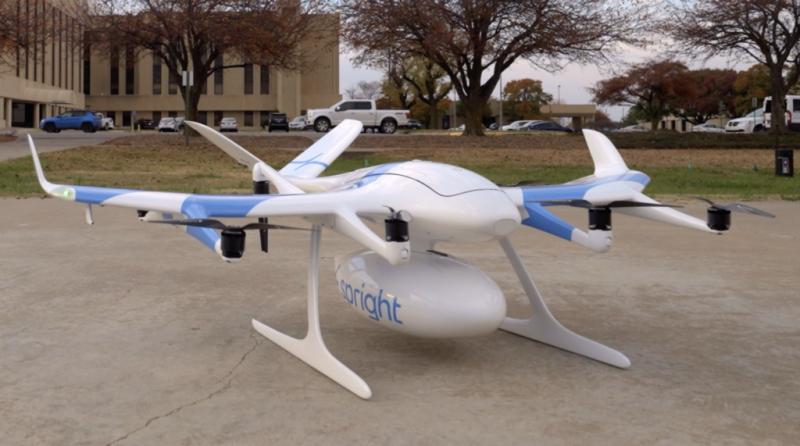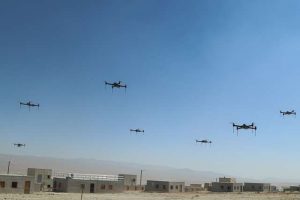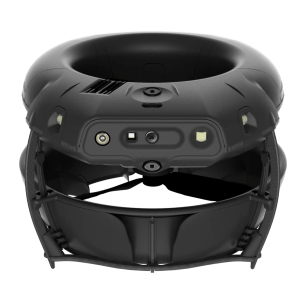Wingcopter – Senior Certification Engineer: Insights and Highlights
Explore the critical position of a Senior Certification Engineer at Wingcopter, a frontrunner in drone innovation. This article delves into the key responsibilities, essential expertise, and the impact on stakeholders, alongside a broader overview of drone certification’s role in shaping the global future of unmanned aviation.
1. The Significance of Certification Engineering in the Drone Industry
The fast-paced development of the drone industry—ranging from last-mile delivery and humanitarian support to infrastructure assessments and disaster management—relies heavily on effective certification processes. Beyond merely meeting compliance standards, certification establishes trust, safety, reliability, and legal operational status in international airspace.
At Wingcopter, the Senior Certification Engineer is a vital player, integrating technology, regulation, and market preparedness.
2. Wingcopter: A Portrait of Innovation
Known for the Wingcopter 198, an all-electric composite tiltrotor UAV, Wingcopter is designed for a variety of high-stakes missions such as delivery, medical logistics, rescue operations, mapping, and inspections. Its energetically efficient design and global operational experience, spanning frozen landscapes to sunlit deserts, exemplify its advanced drone capabilities.
A standout achievement is its effective partnership with global regulatory bodies for type certification, the cornerstone for enabling regular, commercial drone services in populated regions.
3. Role of a Senior Certification Engineer at Wingcopter
This role transcends technical duties, serving as a prominent leadership position that combines engineering accuracy with regulatory acumen and program management expertise.
Primary Duties and Key Responsibilities
- Technical Leadership and Regulatory Liaison: Act as Wingcopter’s senior technical representative with global certification bodies (FAA, EASA, JCAB, ANAC), actively influencing dialogue and compliance strategies.
- Certification Process Management: Oversee the full compliance, airworthiness, and approval process, ensuring drones meet operational safety and legality across the globe.
- Interdisciplinary Link: Connect design, production, and regulatory teams, managing compliance across the product lifecycle.
- Comprehensive Compliance: Establish the certification basis, interpret regulations, and spearhead compliance demonstrations across various domains.
- Documentation Oversight: Compile, review, and verify extensive regulatory documentation—from certification blueprints to compliance frameworks.
- Ongoing Airworthiness Maintenance: Supervise post-certification outputs like Technical Service Bulletins (TSBs) and Emergency Service Bulletins (ESBs).
- Industry Representation: Participate in leading technical organizations (ASTM, EUROCAE) to help set emerging standards.
Pro tip: The most effective Senior Certification Engineers innovate within these frameworks, shaping future standards while guaranteeing safe drone operation today.
4. Daily Operations: Tasks and Influence
Picture a typical week for a Wingcopter Senior Certification Engineer. Activities might include:
- Finalizing certification plans with the FAA for the Wingcopter 198, ensuring all documents align with current technical and regulatory needs.
- Executing a conformity inspection, auditing initial articles against strict design criteria across different continents, using digital collaboration platforms.
- Working with software, hardware, and testing teams to maintain traceability of all product specifications, from minor battery updates to advanced autonomous navigation features.
- Attending virtual ASTM committee meetings to advocate for practical standards benefiting the entire industry.
- Providing training to new engineers and updating leadership on imminent regulatory changes and possible certification challenges.
This work markedly enhances the ability for drones to secure permissions, such as Level 4 flights (BVLOS – beyond visual line of sight in populated regions), paving the way for transformative business prospects.
5. Certification Milestones: FAA, EASA, JCAB, ANAC
Wingcopter collaborates with global airspace regulators:
| Regulator | Role & Significance | Recent Milestones For Wingcopter |
|---|---|---|
| FAA (USA) | Sets U.S. standards for commercial UAS | Special Class Airworthiness Criteria for Wingcopter 198 allows urban flight for deliveries. |
| EASA (EU) | Governs EU airspace & drone operations | Ongoing council and advisory involvement. |
| JCAB (Japan) | Certifies UAVs for Japanese airspace | First international, fixed-wing drone approved for type certification. |
| ANAC (Brazil) | Oversees Brazilian standards | Entry consulting for South American markets. |
A notable instance in Japan involved Wingcopter and ITOCHU’s medical blood product transport trials, which progressed thanks to special permits, underscoring the essential role of certification engineering in urgent, lifesaving deliveries.
6. Vital Skills & Traits: What Defines an Exceptional Wingcopter Certification Engineer?
This complex, demanding job requires unique attributes.
Key qualities include:
- In-depth regulatory knowledge: Mastery of FAA, EASA, JCAB, ANAC mandates; skillfulness in interpreting, negotiating, and outlining requirements.
- Solid technical grounding: Proficiency with UAV systems, avionics, software, and hardware.
- Detailed documentation: Expertise in generating and validating compliance documents.
- Leadership and communication: Ability to build consensus across disciplines and simplify complex issues for non-experts.
- Strategic orientation: Foresight in identifying shifts in global drone regulations and strategically adjusting programs.
- Passion for safety, quality, and innovation.
Insider tip: While some see regulations as hindrances, proficient Wingcopter engineers leverage them as enablers, speeding up product rollouts and advancing competitive margins.
7. The Certification Transition: From Initial Design to Comprehensive Operations
The development of cutting-edge drones like the Wingcopter 198, from initial concept to fully certified machines, involves:
- Defining Requirements: Identify the purpose and regulatory framing of the drone.
- Certification Strategy: Early consultations with regulatory bodies (e.g., FAA, JCAB) to synchronize technical and compliance plans.
- Design and Documentation: Prepare comprehensive records and technical support for reviews.
- Ground and Flight Testing: Coordinate with Ground and Flight Test Engineers for a comprehensive range of tests assuredly documented for regulatory acceptance.
- Observations & Assessments: Engage in compliance assessments, conductor oversight visits, and manage any identified issues.
- Continuous Airworthiness: Keep collaborating with regulatory bodies, updating documents, addressing safety reports, and amending operational materials post-certification.
Memorable Highlight: During Japanese type certification, Wingcopter’s successful proof-of-concept missions like medical supply air deliveries to isolated islands garnered public enthusiasm, exemplifying the “engineered-for-certification” approach.
8. Value and Advantages: Why Is This Role Crucial for Stakeholders?
A drone with proper certification:
- Ensures operation in heavily regulated airspace and access to urban markets.
- Fosters trust from clientele—public services, healthcare, logistics—necessitating dependable, safe, and lawful operations.
- Unlocks substantial contracts (e.g., BVLOS delivery, critical humanitarian supplies, industrial supervision).
- Gives Wingcopter a competitive edge over rivals lacking regulatory adherence.
Industry insider’s perspective: Masterful certification engineering isn’t just a firm’s advantage—it establishes public trust and expands market presence.
9. Wingcopter Team & Ethos: The Human Advantage
Every accomplishment is powered by a dynamic, varied team. Wingcopter’s team blends young professionals with seasoned veterans, encouraging collaboration and professional development.
Certification engineers don’t only manage paperwork—they mentor peers, uphold the firm’s global presence, and sustain innovation (occasionally with a hint of humor or pop-culture flair).
Client narrative: “Our hospital partnership was achieved thanks to Wingcopter’s team diligence—answering every regulatory query, providing documentations, and demonstrating drones even during a rainstorm—setting the gold standard for safety and clarity.” – Partner feedback
10. Future Directions: Your Next Aeronautical Venture
Drone certification is rapidly transforming:
- Global Alignment: New international standards are being developed, facilitating cross-country operations but raising quality expectations.
- Digital Solutions: Automation and digital twins streamline documentation and review tasks.
- Expanding Roles: Shifts from single-package delivery to diverse logistics, intelligent agriculture, and ecological surveillance are underway.
For career-focused individuals, the Senior Certification Engineer pathway offers a dynamic role in one of aviation’s most thrilling evolutions, with notable real-world influence—conserving lives, linking communities, and diminishing carbon emissions.
11. Engage: Why Join the Wingcopter Initiative?
At Wingcopter, the role of Senior Certification Engineer isn’t just a position—it’s the opportunity to contribute to aviation history, enrich the future of drone logistics, and establish oneself as a global innovator.
Are you ready to shape the future skies? Whether your interest lies in purchasing a drone, starting a drone enterprise, or advancing logistics with certified UAV solutions, Wingcopter invites clients, collaborators, and aspiring team members to rise above.
“In certification we trust. In flight, we deliver.”













